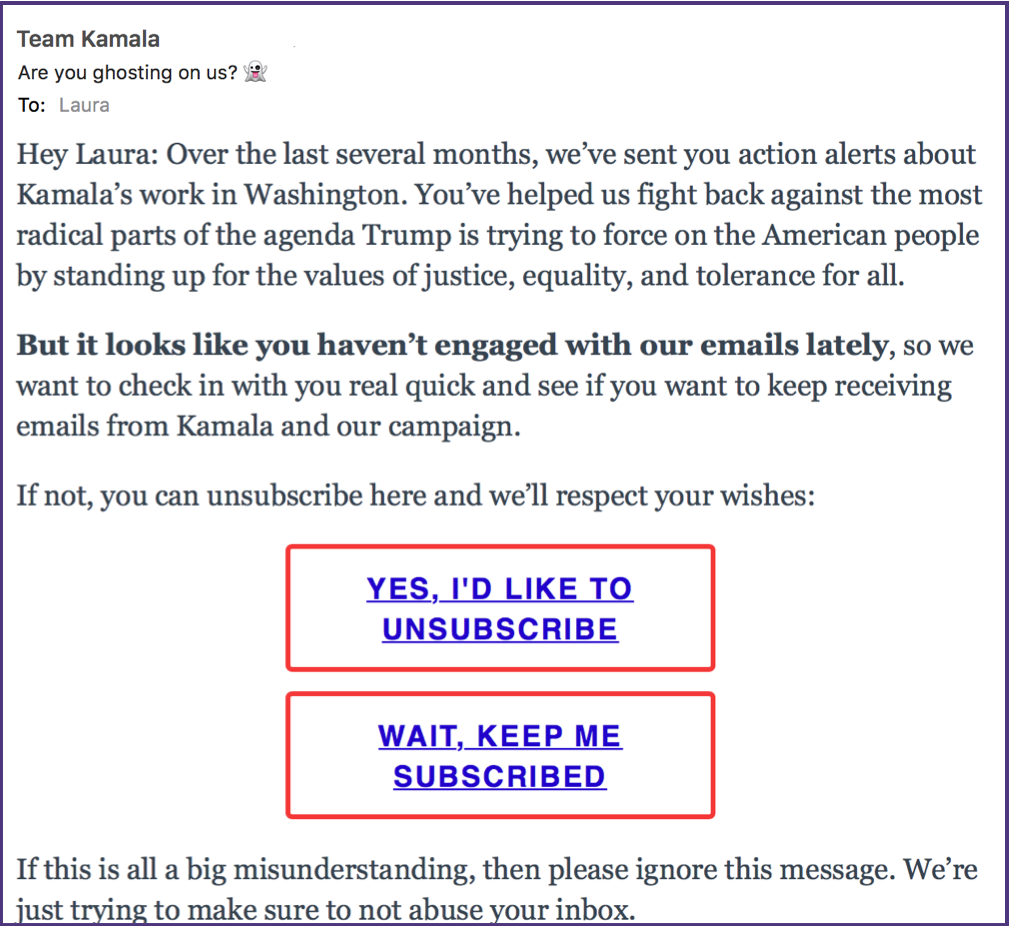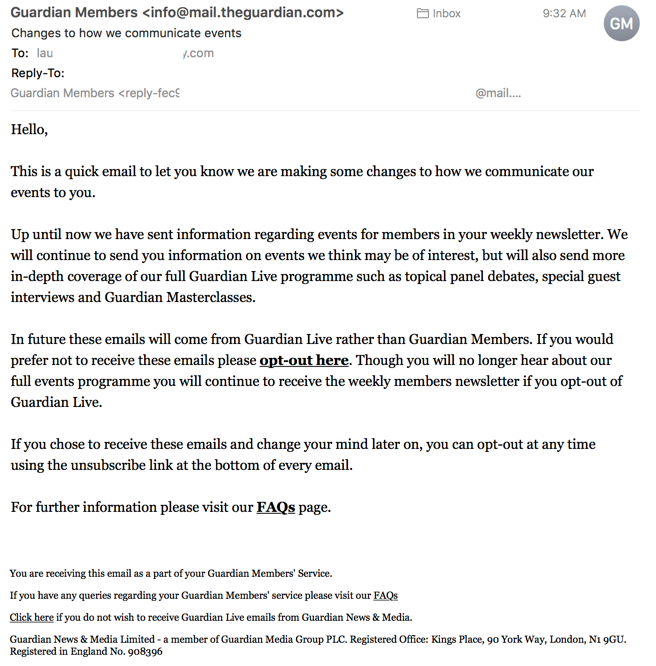Reengagement emails
- laura
- August 15, 2017
- Best practices
By default I don’t load images in email. For one thing it lets me see who is using open / click data to measure engagement. This morning I got a reengagement email from my Senator. 
There are things I really like about this email and there are somethings I think they get a little wrong.
The good
This is a great subject line. I like the use of “ghosting” to describe what the email is about, and the inclusion of an emoji ghost. It all makes the subject line coherent and worthy of a click.
The other thing I really like about this is the large links, suitable for clicking on a mobile device. Really, people, some of us are old, have fat fingers or have phones with tiny text. Links, particularly for something like this, should be clickable on a phone.
The not so good
The not so good bit, though, is that I am reasonably engaged with my Senator’s emails. I mean, yeah, I don’t load images, but have clicked on some links in the past. Looking through my mailbox, the last time I clicked through on an email was June 9 or 10, just about 60 days before I got this message. That is more aggressive than I tend to recommend for most clients.
The weird
The weird bit is I’ve only received 2 messages since June 22, one of them being the re-engagement message. The other was an update related to my engagement activity on June 9. I know it’s August recess but the drastic downturn in volume coupled with a reengagement email makes me wonder if there isn’t something else going on.
Overall, this is a decent example of a reengagement email. It’s also a good example of a mobile email. I see designers fret about borders and alignment and never really see anyone discussing making links big enough to get your finger on. Really, I’ll take an ugly, unaligned email if it comes with a link big enough for me to click.
